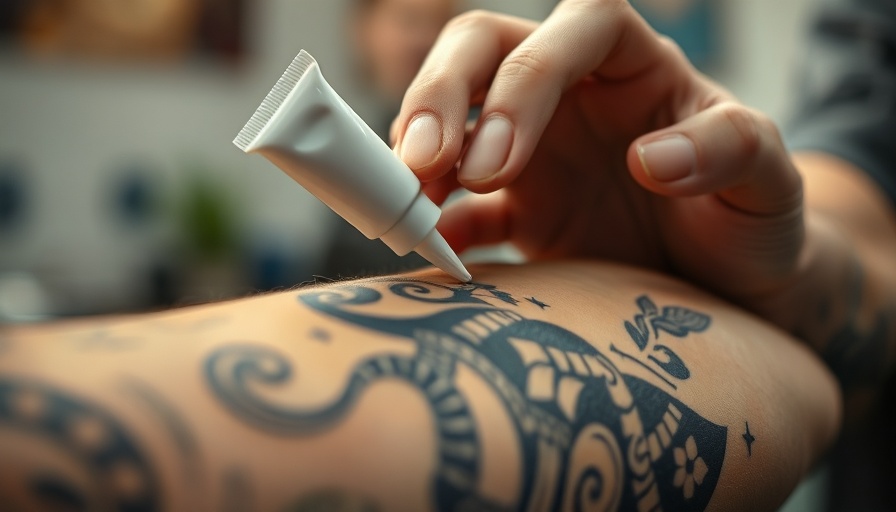
Understanding Tattoo Numbing Creams: A Safe Choice or Risky Business?
For many, the thought of getting a tattoo brings not only excitement but also a wave of apprehension about the pain that often accompanies the process. As a result, tattoo numbing creams have surged in popularity, touted as a solution to alleviate discomfort. However, the safety and effectiveness of these products can sometimes raise eyebrows. In this article, we will explore the intricacies of tattoo numbing creams, including what consumers should know about their usage, safety precautions, and recent regulatory actions.
The Difference Between FDA Approval and OTC Monograph Compliance
One essential aspect to consider regarding tattoo numbing creams is their regulatory status. The U.S. Food and Drug Administration (FDA) plays a pivotal role in overseeing the safety of such products. Products can either be FDA-approved, which involves rigorous testing and review, or they can comply with the OTC Monograph. The latter allows certain products to be marketed without individual FDA approval as long as they adhere to the established guidelines regarding ingredients and labeling.
While FDA approval offers a higher level of consumer assurance, adherence to the OTC Monograph signifies that a product still meets recognized safety standards. As such, many tattoo numbing creams, such as Adellina and Hush Gel, include acceptable concentrations of lidocaine, a widely used topical anesthetic.
Active Ingredients that Make Tattoo Numbing Creams Effective
The efficacy of a numbing cream largely depends on its active ingredients. Here are some of the most common components:
- Lidocaine (4-5%): The leading topical anesthetic, working to block nerve signals and reduce pain effectively.
- Benzocaine: Typically used for surface-level pain relief and often combined with lidocaine for enhanced effect.
- Tetracaine: Known for its longer-lasting relief, sometimes added for extended numbing duration.
- Epinephrine: Occasionally found in formulations to constrict blood vessels, minimizing bleeding and prolonging the numbing effect.
While these ingredients can provide significant relief, the dosage and application techniques are critical in ensuring safety.
Recent Warnings and Consumer Awareness
In a concerning disclosure, the FDA has recently issued warnings regarding certain topical pain relief products marketed specifically for tattooing and other cosmetic procedures. These warnings highlight the risks associated with high concentrations of lidocaine, which can lead to severe side effects such as irregular heartbeats and seizures when misused. The advisory cautions consumers against using products containing over 4% lidocaine and those applied to broken or irritated skin, as these scenarios heighten the risk of dangerous side effects.
Some companies have received warning letters from the FDA for violating regulations tied to product formulations, indicating the importance of consumer vigilance and the necessity for reliable sources. With multiple incidents reported, this emphasis on safety serves as a crucial reminder to individuals considering using numbing creams before getting tattooed.
Safety Tips for Using Tattoo Numbing Creams
To ensure a safer experience when opting for tattoo numbing creams, here are some actionable safety tips:
- Patch Test: Always conduct a patch test 24 hours before the tattoo session to identify any adverse reactions.
- Adhere to Instructions: Follow the manufacturer's guidelines on application time and dosages precisely to avoid potential side effects.
- Avoid Open Skin: Numbing creams should never be applied to broken or inflamed skin to prevent increased absorption and risk of toxicity.
- Consult with Professionals: Discuss with your tattoo artist before use, as they might have preferences on skin preparation that could affect your tattoo's outcome.
Applying these tips not only ensures a more comfortable experience but also safeguards your health as you embark on your tattoo journey.
Making Informed Choices About Tattoo Numbing Creams
Ultimately, the decision to use tattoo numbing creams should come from a place of knowledge and understanding of the potential risks involved. Armed with insights about FDA regulations, safety precautions, and product ingredients, consumers can navigate their tattoo experiences with greater confidence and safety.
If you’re curious about taking the plunge into tattooing and considering numbing creams, why not speak openly with your artist and do diligent research on the products available? Better knowledge leads to better choices!
 Add Row
Add Row  Add
Add 



Write A Comment